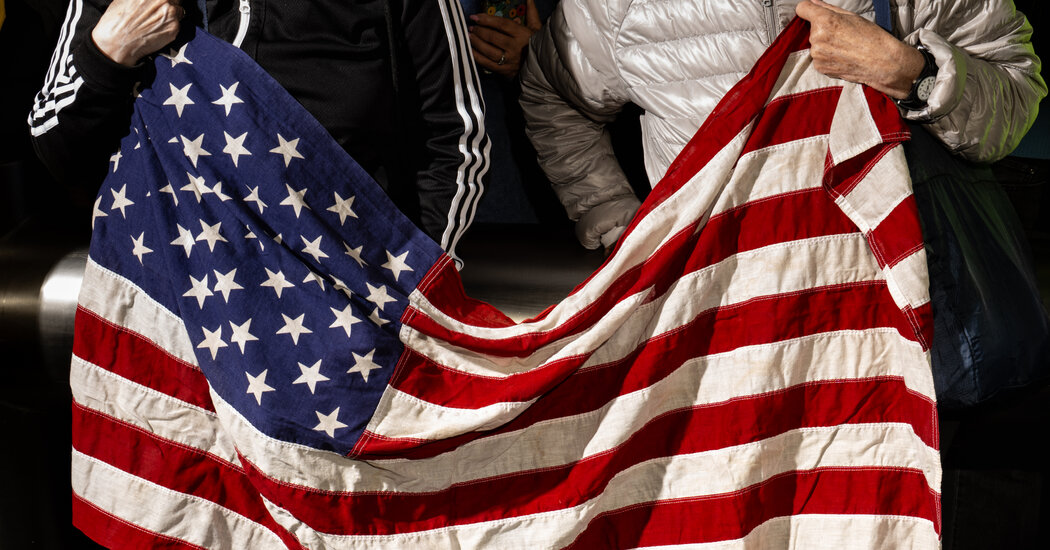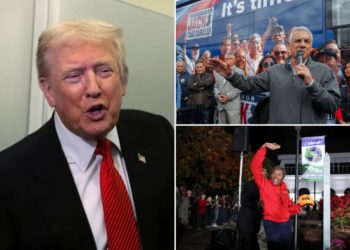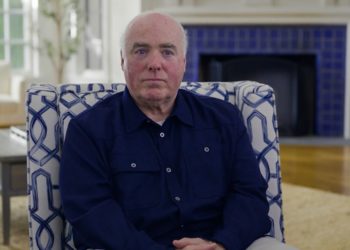There is a battle raging across America (and soon in the halls of the Supreme Court) over what it means to be an American and what our nation should aspire to be.
It’s part of a war between two stories of nationhood that we’ve been waging since the United States was created 249 years ago.
One vision is civic. It says that we Americans may lack a common history, religion or ethnicity, but what we share are the ideals in the Declaration of Independence: Each human has a natural and equal right to life, liberty and the pursuit of happiness. To be American, in this tradition, is to create a society dedicated to making these ideals a reality.
The other vision — an animating force inside the Trump administration — is exclusive and ethnonationalist. Vice President JD Vance laid it out explicitly in a speech this summer: a national identity based not on ideals, but on privileged heritage and bloodlines.
“America is not just an idea,” Mr. Vance said. “We’re a particular place, with a particular people, and a particular set of beliefs and way of life.” He added: “The people whose ancestors fought in the Civil War have a hell of a lot more claim over America than the people who say they don’t belong.”
If we abandon the Declaration’s ideals in favor of a tribal concept of national membership, we’re done for. America will have traded a quest for human freedom for a sectarian project to allow a minority to dominate everyone else. Here’s the good news: A vast majority of Americans are on the side of the Declaration and reject the ethnonationalist vision.
If we’re to remain a free society, those committed to the American experiment are going to need to start expressing our civic national ideals as effectively and compellingly as the ethnonationalists articulate theirs.
Nations are, as the Anglo-Irish historian Benedict Anderson put it, “imagined communities”; they only exist because we collectively believe they do. Every nation is defined and shaped by the stories its members have come to accept about where it came from, what its purpose is, who belongs to it and who does not.
Having such a story is more critical for federated states like Canada, Belgium, the United Kingdom or ourselves, because such countries don’t have shared ethnic or religious identities as a crutch.
By the 1830s and 1840s, there were two competing stories of America that are in opposition, a contest over identity and purpose that continues to this day.
The civic story came first, along with its ideals: a natural right granted to all humans by God or nature to survive, to not be tyrannized, to pursue our happiness as we each understand it and to have equal access to the representative self-government that makes it all possible. And that we’re in a covenant, as Americans, to protect one another’s rights to these things. This was perhaps most eloquently expressed by Abraham Lincoln at Gettysburg and the Rev. Dr. Martin Luther King Jr. on the National Mall.
But from the 1830s onward, this story was contested by a circle of Southern intellectuals who said: The Declaration is wrong. Humans are not equal. Only the Anglo-Saxon race, they argued, had the genius and ability to secure the promises in the Declaration. We’re a classical republic like Ancient Greece and Rome — where a minority have the privilege or “liberty” to practice democracy, and subjugation or slavery are the natural state of the many.
In his speech this year, Mr. Vance identified “our ancestors” as the people who came to “tame a wild continent.” Americans, in this construction, are those people whose ancestors participated in the conquest of Indigenous America, a process that occurred primarily between 1604 and 1890, when the Census Bureau famously declared that the frontier was no more. If your ancestors include people who were Indigenous or enslaved or who immigrated to this country after 1890 — ancestors who, in all likelihood, are not British, German or French Protestants — you might not be equally American.
Mr. Vance’s speech is no outlier. The most famous image associated with his story of white Protestant conquest is John Gast’s “American Progress,” an 1872 painting depicting Indigenous people fleeing the westward advance of white settlers, their technology and a guiding angel bearing a schoolbook and a coil of telegraph wire. The Department of Homeland Security recently posted the painting on its official X account. “A heritage to be proud of,” its message said, “a homeland worth defending.”
As part of this ethnonationalist theme, President Trump has asked the Supreme Court to allow him to reinterpret the 14th Amendment to disallow the very birthright citizenship it has historically been understood to protect — the constitutional linchpin of our egalitarian identity.
Ethnonationalists also ruled this country in the 1910s and 1920s. President Woodrow Wilson, a Southern president, segregated the federal government. Confederate statues were erected. “The Birth of a Nation,” a film celebrating the Ku Klux Klan’s successful terrorist campaign to restore white supremacy in the occupied South, was all the rage. The 1924 Immigration Act imposed racial quotas to defend the Anglo-Saxon character of the country.
Americans like to think of our country as one of the oldest democracies in the world. But we only truly became a liberal democracy in the 1960s, in the living memory of many Americans. It was only then that the civic national vision triumphed nationwide, a result of the mass mobilizations in the World Wars, the civil rights movements that returning Black and Native American and Latino vets helped spearhead, and the interventions of the federal government at key moments.
We’ve been studying these competing stories of national identity at the Nationhood Lab at Salve Regina University’s Pell Center for International Relations and Public Policy.
Over months of historical research, national polls and dozens of in-depth interviews with citizens last year, the most striking thing we learned is that most Americans really do support and prefer the Declaration’s ideals over those of the ethnonationalists.
In an early poll, when offered rival statements about our national purpose, American identity and our past, the civic one was far more attractive regardless of gender, age, race, education or region.
Sixty-three percent of Americans preferred the statement that we are united “by our shared commitment to a set of American founding ideals: that we all have inherent and equal rights to live, to not be tyrannized, and to pursue happiness as we each understand it” over one embraced by just 33 percent of respondents that said we are united “by shared history, traditions and values and by our fortitude and character as Americans, a people who value hard work, individual responsibility and national loyalty.” That 63 percent included just shy of half of Republicans, nearly two-thirds of independents, and eight in 10 Democrats.
Another survey showed that Americans agreed with the argument that we are duty-bound, as Americans, to protect one another’s natural rights to life, liberty and so on — by an incredible 97-2 margin.
That’s common ground we can work with. If we can come together in defense of the Declaration’s sacred ideals, then we indeed have a chance at revitalizing the civic vision after the challenge of the Trump era.
Colin Woodard, the director of Nationhood Lab at Salve Regina University, is the author of “Union: The Struggle to Forge the Story of United States Nationhood” and the forthcoming “Nations Apart: How Clashing Regional Cultures Shattered America.”
The Times is committed to publishing a diversity of letters to the editor. We’d like to hear what you think about this or any of our articles. Here are some tips. And here’s our email: [email protected].
Follow the New York Times Opinion section on Facebook, Instagram, TikTok, Bluesky, WhatsApp and Threads.
The post There’s Still a Shared American Story, and JD Vance’s Blood-and-Soil Vision Isn’t It appeared first on New York Times.




